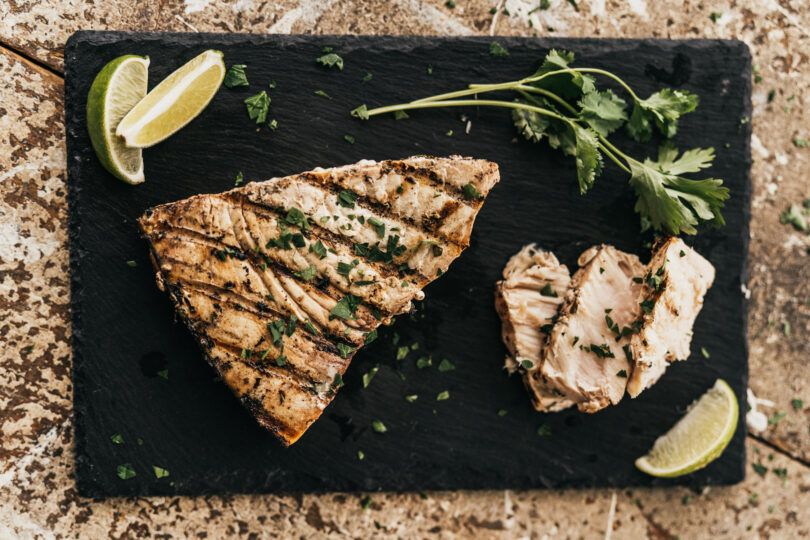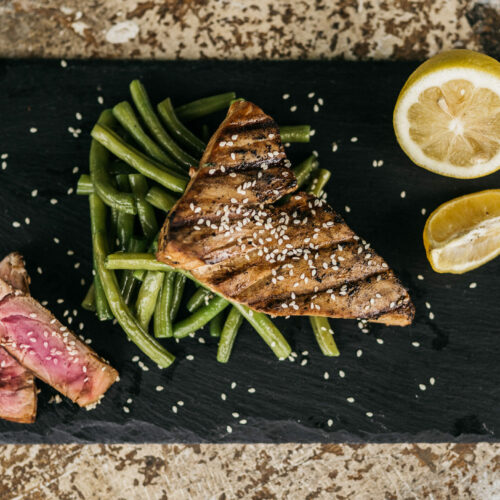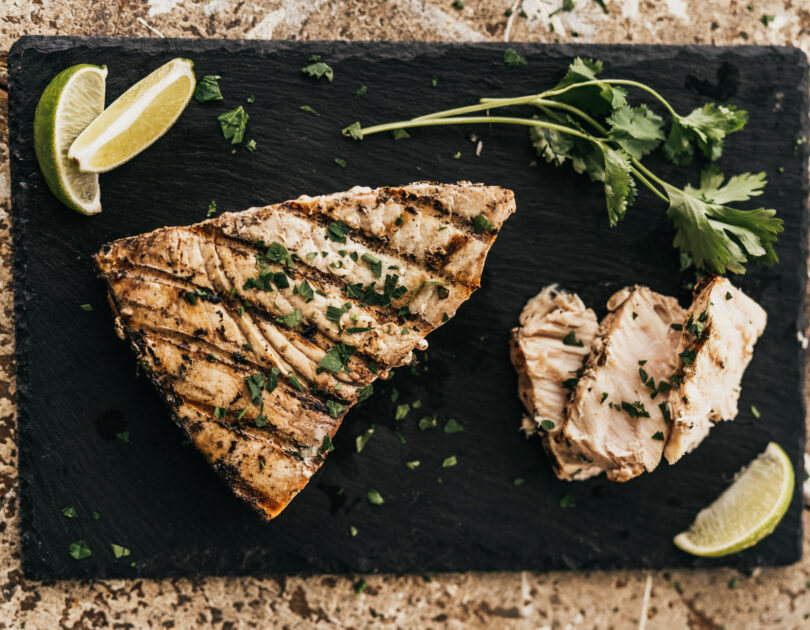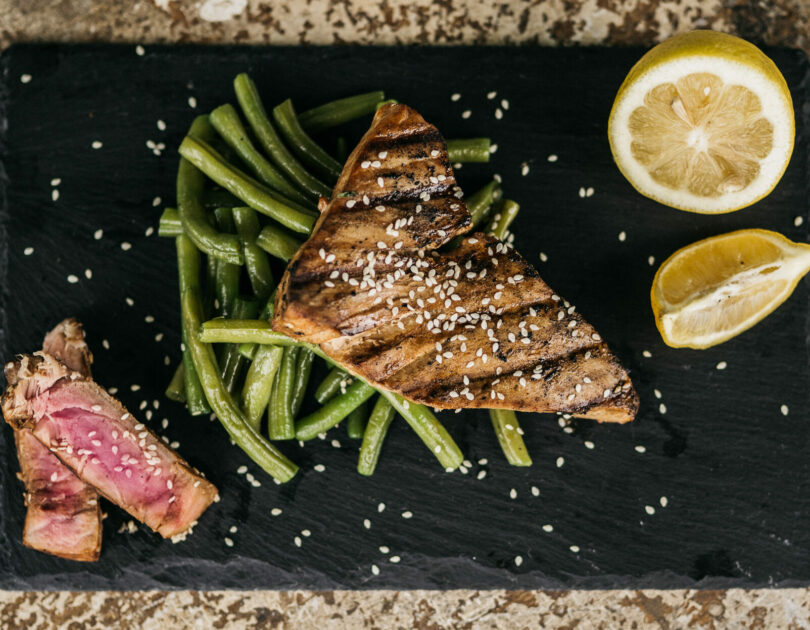Fire Up the Grill for Swordfish or Tuna Steaks
As the warm weather has rolled in, grills are being rolled out from winter storage. But just because you’re deciding to cook outside doesn’t mean you have to sacrifice healthy meals or even have to stick with traditional meat cuts. Try a new type of steak on the grill this summer – Mahi, swordfish, and tuna steaks do well on the grates.
What is a Fish Steak?
Never heard of a fish steak? Just like beef, fish steaks are just a specific cut of fish. As opposed to fish fillets, which are cut parallel to either side of the spine, fish steaks are cut perpendicular to the spine and tend to offer a thicker, more substantial serving. Larger fish, such as tuna, swordfish, salmon, cod, and mahi-mahi, are often cut into steaks, but steaks can be cut from any fish larger than 10 pounds.
Also, just like beef, fish steaks can be grilled, pan-fried, broiled, or baked. While beef steak takes time to cook and can be tough, fish steaks cook rapidly and is very tender. Other great seafood options that can withstand the heat of the grill include black cod (sablefish), bluefish, catfish, mackerel, red snapper, and trout.
Health Benefits of Fish Steaks
As an added bonus, all the medium-to-fattier fish that do so well on the grill are also the ones with the most omega-3s – those essential fats that are shown to reduce the risk of heart disease, depression, dementia, arthritis, and more. Prominent health organizations from the American Heart Association to the American Diabetes Association suggest trying to get 250 to 500 milligrams of omega-3s EPA and DHA per day, and swordfish, for example, has more than 1,000 mg and tuna steaks are even higher at 1,700 mg!
Grilling Tips for Fish Steaks
Here are some tips to successfully grill seafood – and especially since fish cooks so quickly, how to know if your fish is cooked:
- The best fish fillets or fish steaks for grilling directly on the grates are at least 1-inch thick. You can still get the delicious smoky flavor from grilling more delicate cuts, just wrap thinner fillets in cornhusks, banana leaves, or aluminum foil — or place the fish on presoaked cedar planks.
- When cooking on a grill, proteins and even vegetables tend to lose moisture fast with the juice dripping down onto coals. To preserve moisture, coat the fish with oil or thick marinade, which will help seal the moisture inside.
- If you’re cooking a fillet with skin on, start with skin-side down for three to five minutes before gently flipping with a wide spatula.
- Many types of fish are delicate and tender, so you want to avoid overcooking them. The best way to tell if a fish is done is by testing it with a fork. Insert the fork at an angle, at the thickest point, and twist gently. The fish will flake easily when it’s done, and it will lose its translucent or raw appearance.
- Many people like tuna rare or medium rare, so a quick sear on both sides is all that is needed; but for other fish, such as salmon or white fish, you’ll want to make sure it is fully cooked throughout. A good rule of thumb is to cook the fish to an internal temperature of 140° to 145°F.
Recipes for Fish Steaks
To make a delicious meal for the family, seafood works great with fresh ingredients like corn, tomatoes, and grilled vegetables. Enjoy this recipe for an Asian Sesame Grilled Tuna Steak or Cilantro Lime Swordfish and don’t forget to #EatSeafoodAmerica!
[/cmsmasters_text][/cmsmasters_column][/cmsmasters_row]







Leave a Reply